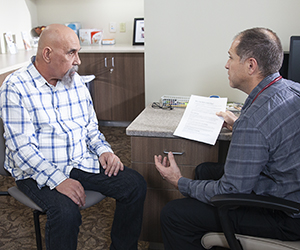Surgery for Parkinson Disease
Parkinson disease is a condition that affects control over movement. Treatment often includes taking medicines. If symptoms are severe and medicines don’t help, surgery may be advised. Surgery is not a cure. But it may help relieve some of the symptoms of the disease. It works mainly on tremors and rigidity.
 |
| If surgery is an option for you, your doctor and other members of your healthcare team can explain its risks and benefits. |
Types of procedures for Parkinson disease
Several types of procedures can be done:
-
Deep brain stimulation (DBS). An electrode is implanted in the brain. The electrode is connected to a controller that is put under the skin of the chest. When needed, the controller sends pulses through the electrode. The pulses interrupt brain signals that cause certain symptoms.
-
Lesioning. This includes pallidotomy, thalamotomy, and subthalamotomy. The goal is to block the pathways of messages that can lead to symptoms. During the surgery, a very small lesion is made in 1 part of the brain. This can be done with small tools or focused high-energy radiation (radiosurgery). Pallidotomy may help lessen tremors, stiffness, and slowness of movement. Lesioning is not often used.
-
MRI-guided focused ultrasound. This is a noninvasive method. It uses high-frequency ultrasound beams to create new brain lesions to lessen tremors and rigidity. It does not require incisions. But it destroys brain tissue. And it is not reversible.
-
Duopa therapy. This procedure delivers the combination medicine carbidopa-levodopa directly into the intestine in gel form. This method has better absorption than taking the medicine as a pill. Surgery is needed to create a small hole (stoma) in the belly. This is to place a tube into the intestine. A pump then sends medicine to your intestine through the tube.
Future options
Many procedures for Parkinson disease have been researched. Some show promise, but more research is needed. Your healthcare provider can answer questions about other procedures you may have heard about. One experimental new surgery is restorative surgery. During this surgery, new brain tissue, gene therapy, or stem cells are transplanted into the brain. There, the new tissue takes over the function of damaged cells.
© 2000-2024 The StayWell Company, LLC. All rights reserved. This information is not intended as a substitute for professional medical care. Always follow your healthcare professional's instructions.